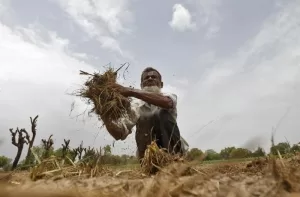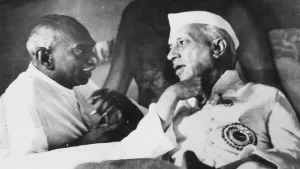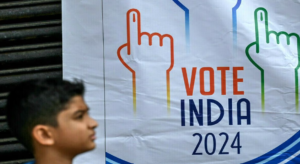Our Prime Minister Narendra Modi is an honorable man. He does what he says. Its only that people don’t understand him.
Modi keeps his promises. He promised to eliminate black money from the Indian economy. In 2016, he kept his promise with a blitzkrieg called demonetization. Apparently overnight, big businesses were able to convert their black money into white money while government-owned banks saw their burden of non-performing assets rise sharply. The result was for all to see. Many in the informal sector could not see only because their businesses did not survive the blitzkrieg.
This was just like Modi’s other blitzkrieg in March last year, of a sudden lockdown with four hours’ notice and the solemn advice to us citizens to fight COVID-19 by banging our utensils and then lighting lamps. Migrant workers with no jobs and no money, on their long march back home, did not have balconies, or even utensils. Some of them, before they could fight the virus in the manner advised by Modi, died on the way to their villages.
Then our Prime Minister promised he would double the income of farmers within two years. He has already done it, behind the veil of a sudden and severe lockdown. Modi is a modest man who does not like to boast of his achievements. But the country should know that the farmers’ wealth was doubled in exactly 227 days!
We learnt from a recent Oxfam report that between “18 March and 31 October, Mukesh Ambani, India’s richest man, and chairman, managing director and largest shareholder of Reliance Industries Ltd- which specializes in petrol, retail and telecommunications more than doubled his wealth, which rose from $36.2 to $78.3bn”. Ambani’s wealth is three times higher than that of the second richest person in India, namely Gautam Adani whose net-worth also grew during the lockdown. Such wealth explosion, at a time of a severe contraction of the Indian economy during the COVID-19 lockdown, defies the law of gravity.
Being modest, the Prime Minister did not mention that the billionaire duo of Ambani and Adani will be honorary farmers, with vast retail and storing (silo) interests in the marketing of agricultural produce. When the income of these two ‘farmers’ are added to the income of the rest of the Indian farmers, it is easy to see that the average income of farmers more than doubled in one mighty leap.
Such wealth creation among farmers may have already been estimated by all pro-corporate market-oriented economists, some here in India and others in the IMF and the World Bank. That is perhaps why they are so vocal and confident in the media about their support for Modi’s new agricultural policies.
The policies have done away with the minimum support price for agricultural produce which provided some protection of income for the farmers. Modi viewed the support price as a hindrance to the future prosperity of farmers, believing that only free market prices can deliver. His three new laws are designed to create a free market for agricultural produce.
The farmers protesting in Delhi should see that simple arithmetic pushes up their average income enormously. So they should welcome the two new corporate members into their community. The Prime Minister can vouch for them as he has dealt with them when he was the chief minister of Gujarat. Now the bonding between them is even deeper with Ambani and Adani being awarded airport and other major government contracts.
Those among India’s elite, who invest in the stock market, are also puzzled why the farmers are unable to see the advantage that flows from a simple arithmetic calculation. After all the elite too got richer mainly due to the rise in share prices, especially of companies run by Ambani and Adani. This spread of good fortune is recognized by stock brokers in India as well as abroad. Only the farmers obstinately refuse to see the advantage of owning shares rather than toiling on their fields for meager returns.
These days terrorists, Khalistanis (Sikhs demanding a separate nation), urban Naxals (Maoists), and foreign conspiracies are the deadly viruses, competing with COVID-19, to destroy India, as our national intelligence officials know so well. The viruses are all if not anti-national then anti- government; if not anti-government then certainly anti-government policies. They are infiltrating the farmers’ movement and the strange problem is that the farmers become like them.
Modi, in agreement with former U.S. President Donald Trump, knows how dangerous the media virus can be. The Washington Post recently carried news of compromised evidence planted in the computers of alleged Indian Maoists, who are in jail awaiting trial. Such reports from The Post, whose exposure of the Watergate scandal brought down President Richard Nixon in the U.S., are of course just another ‘foreign destructive ideology’, Modi rightly warns us about.
Nevertheless, we can sleep peacefully at night because we are in the safe hands of a strong Prime Minister, with a chest measuring 56 inches, who does not compromise his ideals.
So. what option did Modi choose when the farmers behave like a bunch of bad school students who refuse to learn a lesson? Teach the farmers by detaining them. Some of them are being arrested on the slightest suspicion, or even without any suspicion.
In addition, layers of metal spikes, barbed wire, cement blocks and trenches, as well as a massive police presence, cordon off the farmers in Singhlu and the other border areas of Delhi, where the farmers gather in protest. As a result, they have been physically immobilized. This shows that the Prime Minister, backed by the entire state power, is ready to meet any challenge from the farmers, especially their march into Delhi.
In contrast, the protesting men, women and children are a peaceful group. The farmers only weapons are their tractors. Looks like an uneven battle they can never win.
And yet, as the battle progresses, it is becoming less and less favorable for Modi. Not only are the farmers obstinate and determined, they have also found a paradoxical way to fight this battle.
The farmers are not interested in marching into Delhi. They have no interest in negotiating unless the government shows real interest. They have ignored Modi’s verbal assurances in parliament that he supports a minimum support price for agricultural produce. The farmers simply want such a price to be guaranteed by a law passed by parliament.
Modi is apparently alarmed to learn that the farmers protesting outside Delhi are in no hurry. They are consolidating their support among the Sikh and Jat peasants in neighboring Punjab, Haryana and Western Uttar Pradesh. Meanwhile, Kisan Mahapanchayats, gatherings of protesting farmers from 10 to 12 villages, are drawing huge, enthusiastic crowds in Bihar, Maharashtra, Rajasthan and Madhya Pradesh.
Similarly, large numbers of farmers are joining marches in support of the Delhi protests in the Southern states of Andhra, Telangana, Karnataka, Tamil Nadu, and Kerala.
The popular appeal of the ruling Bharatiya Janata Party, which Modi heads, will take another serious hit once the farmer protests attract wider support in West Bengal, Odisha and the other Eastern states.
Farmers are uniting and protesting as never before in India. They are ignoring the caste, religious, and class boundaries that normally divide them.
It is now up to the opposition political parties to unite behind the farmers and sink, not merely the three farm laws, but also Modi’s government for passing the laws.
Prime Minister Modi planned to encircle the farmers. But the farmers are now encircling his government.
(The author is former economics professor, Jawaharlal Nehru University, New Delhi.)




